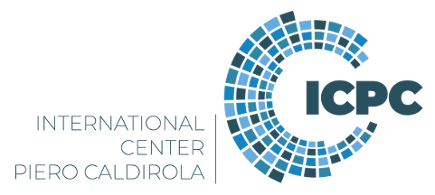Speaker
Description
JET next campaigns foresee various scans in the fuel mixture, full T operation and a 50-50 D-T campaign called DTE2 scheduled at the beginning of next decade. The main scientific objectives include the assessment of the isotopic effects on various plasma aspects: mainly on confinement, on the threshold to access the H mode and on ELM behaviour. Another very important subject of investigation will be the physics of the alpha particles. From a technical point of view, the total yield available for the entire D-T phase is expected to be 1.7 1021 n, about a factor of 6 higher than the previous main D-T campaign on JET, DTE1. Therefore the radiation field will be quite relevant for next step devices, since the neutron flux at the first wall ( ̴ 1013 n/s•cm2), for example, will be comparable to the one in ITER behind the blanket. These experiments will therefore be a unique opportunity to prepare Tokamak diagnostics and related technologies for the full nuclear age, which will be inaugurated by ITER and consolidated by DEMO.
From the point of view of diagnostics developments, for many years JET diagnostics have been upgraded in order to provide adequate support for the scientific exploitation of JET programme. The main efforts have concentrated on improving four main aspects of JET measuring capability: 1) the quality of the measurements of the electrons and ions 2) the diagnostic for the fusion products 3) interpretation codes 4) specific technologies for ITER.
In terms of general diagnostic capability, compared to the previous DTE1, JET diagnostics have a much better spatial and temporal resolution of the electrons (about one order of magnitude improvement for each parameter). The accuracy and consistency of the various independent measurements of the same parameter have also increased significantly; the three independent measurements of the electron temperature, for example, agree now well within 10%. On the other hand, various improvements of the active charge exchange are being pursued to overcome the significant difficulties encountered in measuring the temperature and rotation velocity of the ions in ITER relevant scenarios. Moreover, solutions have been found to operate some cameras, both visible and IR, even during the full D-T phase to provide imaging of the plasma and the first wall. Specific new and upgraded diagnostics have been explicitly developed to investigate disruptions, in particular the physics of the runaway electrons, in support to the Shutter Pellet upgrade.
With regard to the fusion products, JET now can deploy a consistent set of techniques to measure the neutron yield and neutron spectra and to diagnose the fast particles. A full calibration of the neutron diagnostics with a 14 MeV source has been successfully completed, complementing the previous calibration for the 2.45 MeV neutrons and validating ITER procedures. Vertical and horizontal lines of sight are foreseen for neutron spectrometry, in order to separate the RF component from the other contributions. Various gamma ray spectrometers are being developed to cover all the various operational scenarios and to discriminate the trapped and passing components of the alphas. The redistribution of the alphas will be measured with the gamma ray cameras, recently upgraded with full digital electronics; new detectors (LaBr3) have been tested to bring the time resolution of the system in the ten of ms range. The lost alphas will also be diagnosed with improved spatial and temporal resolution, using Faraday cups and a scintillator probe, while an upgraded system to detect the TAE modes, and their interactions with the fast ions, has been proved for the first time to work also in divertor configurations.
For most major diagnostics, and in particular for practically all the enhancements, a very significant effort has been exerted to improve JET interpretative capability via the development of specific synthetic diagnostics. From the measurements of the fusion product to the instabilities and tomographies, a series of advanced codes can be now deployed to better link the diagnostic outputs with the physics of the plasma configurations. Interesting developments are also taking place in the fields of data mining, for the efficient retrieval of the information, and in the exploitation of many measurements for real time control.
From a technological perspective, the full T and D-T campaigns will provide a unique opportunity to test ITER relevant technologies. From radiation hard detectors, for example Hall probes and diamond sensors, to neutron absorbers and to shielding concepts, the potential of various solutions in real radiation fields will be assessed. The effects of neutrons and gamma on ancillary technologies and systems, such as fibre optics and electronics circuits, are also expected to be sufficiently high to derive useful information about the competitive advantage of various potential solutions

